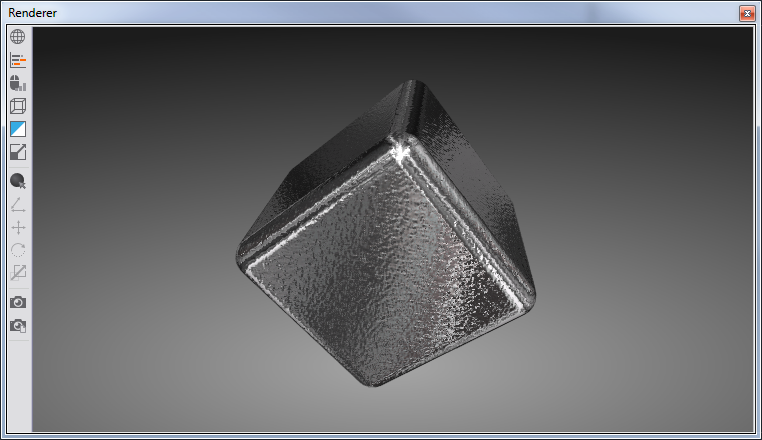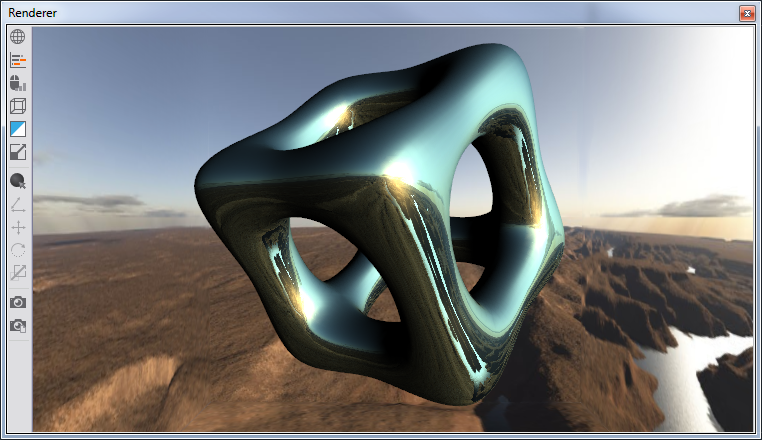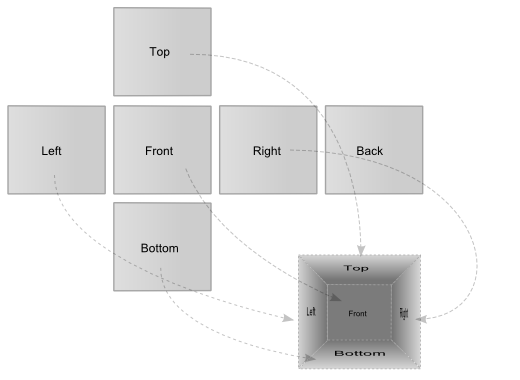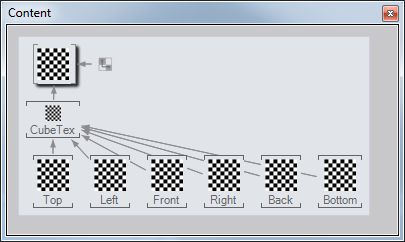Image Converters
Table of Contents
 | Image to Texture | This node converts images into the DirectX texture format (Direct Draw Surface). |
 | Image to BumpMap | This node converts images into a bump map texture. |
 | Images to CubeTexture | This node converts a bundle of six images into a cube texture. |
Image to Texture
This node converts an image (ImageSource) (e.g. coming from an Image Loader node) to a texture (Texture) which can be used by the Texture node. This conversion is necessary because DirectX needs image information in a specific format (Direct Draw Surface or DDS). The Levels property defines the number of MipMap levels that have to be generated during the conversion. If this property is set to 0, all possible MipMap level will be generated. The resulting number of levels however depends on the size of the image. Level values greater zero indicate the required number of MipMap levels. If the property Resize is activated the original image will be additionally resized to a power of 2 image size (...,64, 128, 256, 512,...). This scaling is necessary because older graphics cards require textures with these dimensions to map them correctly on geometries. The property Size defines if the image should be scaled down or scaled up. Possible values for this property are:
| Auto | The image is scaled to the closer power of two size if required by the graphics card. |
| ToUpper | The image is scaled up. |
| ToLower | The image is scaled down. |
Image to BumpMap
The Image to BumpMap converts an image to a texture which contains a kind of height information to create bumpy surface structures. The height information is obtained by analyzing the contrasts in the source image.
The Luma property indicates if an additional luminance value should be included in the resulting texture. Note this feature is not available on all graphics cards.

If the property Resize is activated the original image will be additionally resized to a power of two image size (...,64, 128, 256, 512,...). This scaling is necessary because older graphics cards require textures with these dimensions to map them correctly on geometries. The property Size defines if the image should be scaled down or scaled up. Possible values for this property are:
| Auto | The image is scaled to the closer power of two size if required by the graphics card. |
| ToUpper | The image is scaled up. |
| ToLower | The image is scaled down. |
Images to CubeTexture
Cube maps are a special form of texture that are usually used to represent an environment. Instead of rendering a highly detailed environment, 6 images are mapped to a virtual cube that surrounds the viewer and all content in the scene. If the user keeps a reasonable distance from the sides of the cube, he will be under the illusion that the environment actually is much more complex than those 6 images. Another use is to fake simple reflections on an object surface. For example the SimpleReflection uses a cube texture to lookup the reflection based on the object surface normals.

The Images to CubeTexture node takes six images as inputs and creates a cube texture that can be used with a Texture node to set it on the graphics pipeline. The six images have to represent the view of the six base directions from the center of the object on which the cube texture should be applied. Again imagine standing in the virtual cube described above. The top image will be mapped to the top face of the cube, the front image to the side in front of you, the left image to the side to the left of you and so on.

The easiest way to setup all nodes required for generating a cubemap is to left drag the Texture node Toolbox entry to the Hierarchy Editor. Upon release, choose "Images to Cube Texture" and Ventuz will add the following construct to the scene content.
